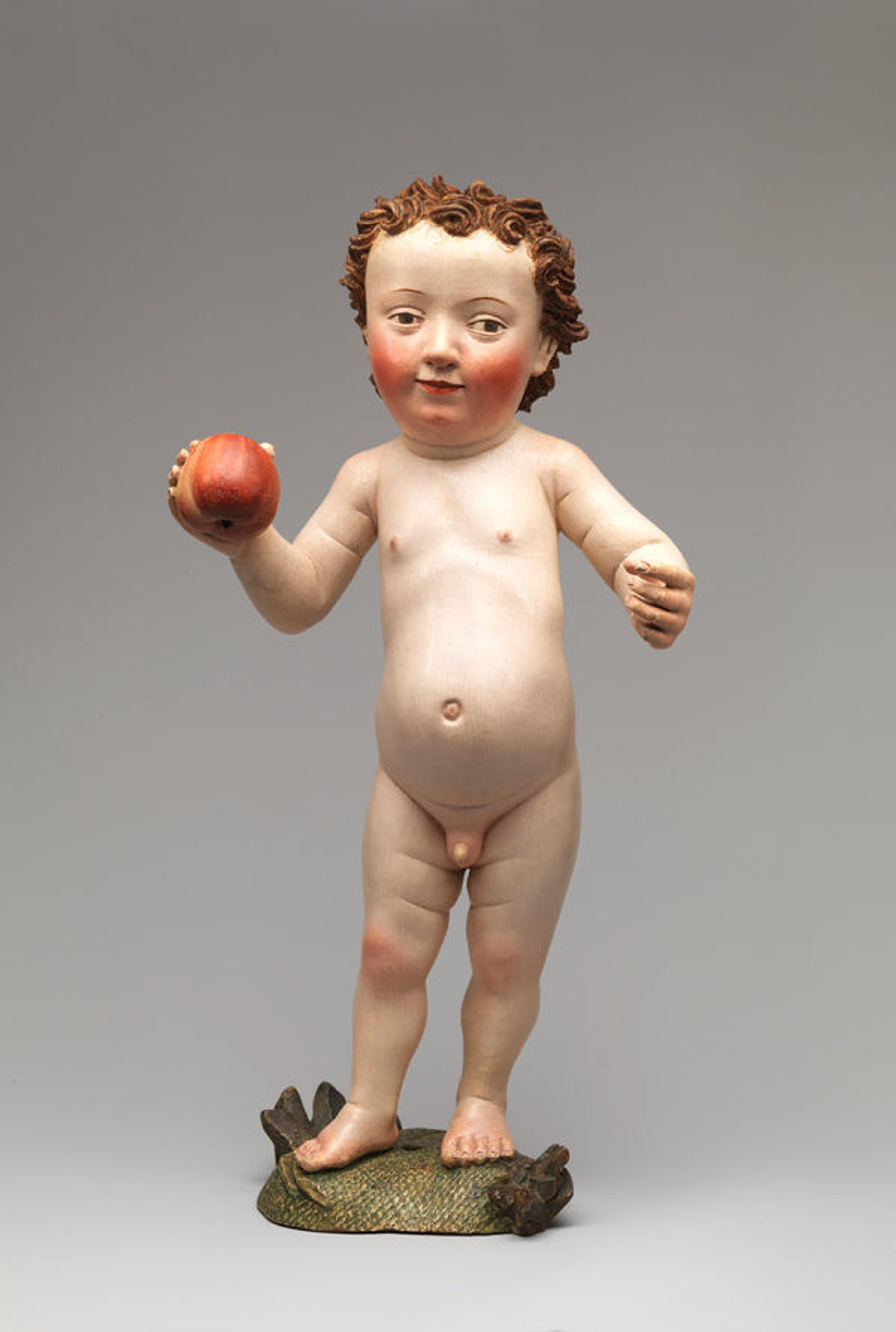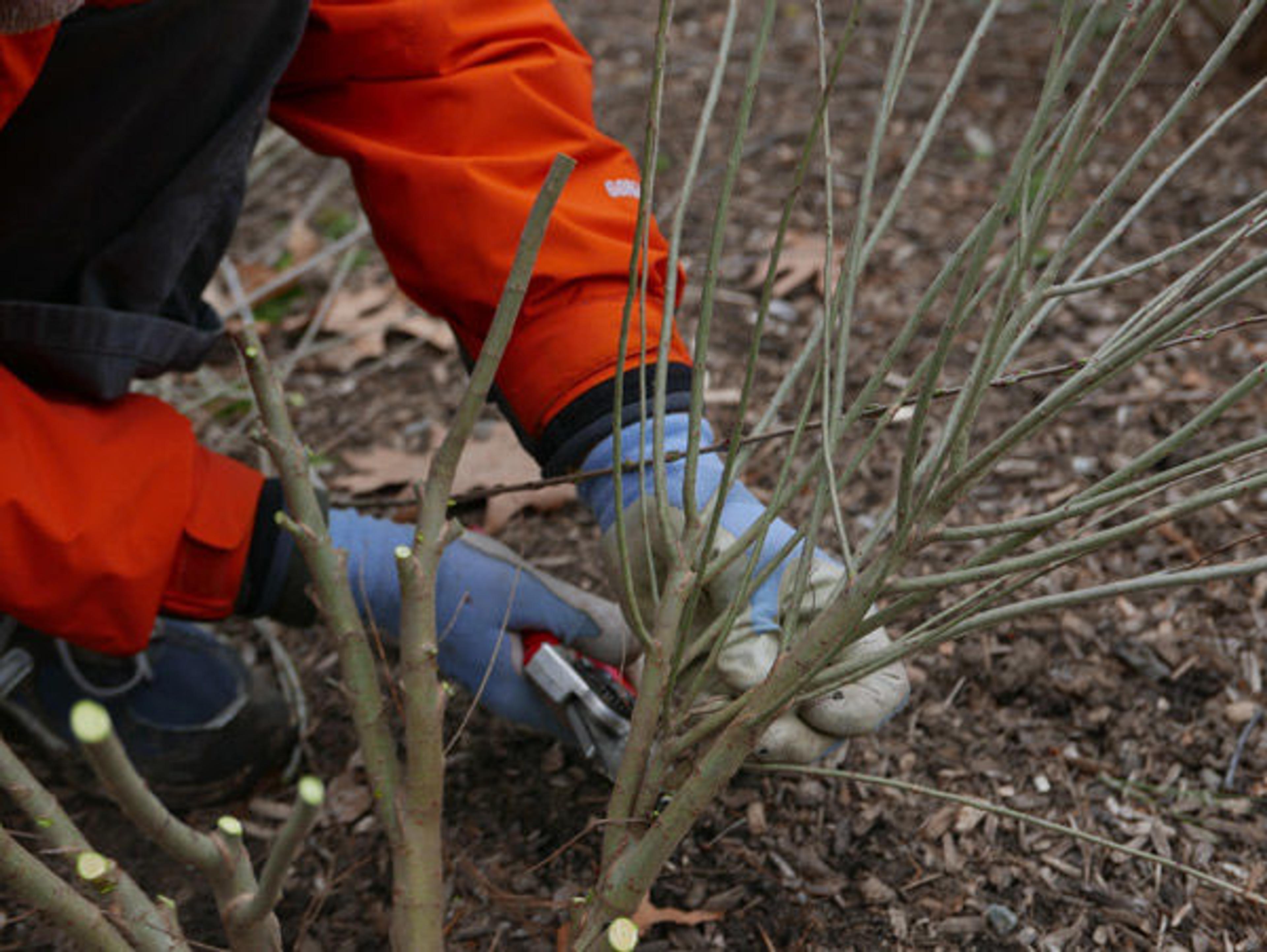Tales and a Tune of the Willow

This compelling little sculpture is carved from a single piece of willow and retains most of its original polychromy. Workshop of Michel Erhart (German active 1464–1522). Christ Child with an Apple, ca. 1470–80. Made in Ulm, Germany. Willow with original paint and traces of gold; 14 15/16 x 7 1/2 x 4 3/4 in. (38 x 19.1 x 12.1 cm). The Metropolitan Museum of Art, New York, The Cloisters Collection, 2012 (2012.449)
«Within the past few weeks the grip of a long winter has loosened, and we have turned our attention toward our trees. Recent visitors might have noticed that our consulting arborist was hard at work pollarding the crab apples in the Cuxa Cloister. She'll have moved on to the trees in the orchard and our beloved veteran fruit trees in the Bonnefont Herb Garden by the time this post is published. We'll also be undertaking the first coppicing of our willows, a topic introduced in my previous post.»
In addition to their many practical uses in wattles, hurdles, baskets, and other items, willows also held medicinal, magical, and symbolic value in the Middle Ages. Willow bark contains salicin, a chemical similar to aspirin, as well as powerful anti-inflammatory compounds, and has been used medicinally for thousands of years. The pharmacological properties of the leaves and bark were recognized by the Assyrians, Egyptians, and Greeks, who used willow to treat pain, inflammation, and fever, though not all willow species have a sufficient quantity of salicin to be used medicinally. According to the principle of sympathetic magic (a type of magic based on imitation or correspondence), since willow grows in wet conditions, it has long been thought effective for ailments common in wet areas. Infusions of willow bark were commonly prepared to remedy chills, rheumatism, and the more acute ague—a fever marked by paroxysms of chills, fever, and sweating. The inner bark, young shoots, buds, and leaves of willow are edible in times of famine, although they are very bitter.

The Gardens staff undertaking their first coppicing of our willows. Photograph by Caleb Leech
Associated with the ancient Greek goddesses Artemis, Hecate, and Persephone, among others, willows were interpreted as symbols of chastity in Christian thought. In Exposition on Psalm 136, Saint Augustine establishes the metaphor of the abundant, but unfruitful willows of Babylon as barren souls interested in only transient things rather than spiritual virtue. The greenness of the supposedly sterile willow signified chastity for Saint Gregory the Great in Morals on the Book of Job wherein he states that "for the children of Holy Church spring up as willows among the grass, when amidst the withering life of carnal men, they last on in manifold numbers, and perpetual greenness of mind." Willow branches and pussy willows were used as substitutes for palm on Palm Sunday in regions where palm was not available and were reportedly used to decorate churches on Easter as well.

A trellis made from the common osier willow (Salix viminalis). Photograph by Wilson Santiago
Willows could be put to any number of magical uses and have ancient associations with witches. In Essex, willow twigs were hung on doors to protect the home from marsh-witches. Willow and rowan were often planted near the door to fend them off, but hazel twigs could be used instead; paradoxically, willow was identified as a witch's tree in East Yorkshire. Willow was traditionally brought into the house for good luck on May Day in Herefordshire, and, according to legend, a child or animal will cease to grow if struck with a willow rod.
Finally, a reference to willow appears in a medieval English carol first documented in thetwentieth century, but originating around the early fifteenth century. The Watersons song The Bitter Withy appears to be based on apocryphal stories about Christ's childhood. There are several versions of the story and carol, but they generally tell of the young Jesus illustrating his divine power to other children (building a bridge out of sunbeams and forming pools of water on the banks of the River Jordan). In the carol, the others come to harm, Mary discovers what Jesus has done, and she delivers three blows with a handful of willow twigs. In the final verse, Jesus declares that "oh, the withy, it shall be the very first tree that perishes at the heart!" The legend provides an explanation for the tendency of the crack-willow to split and collapse under its own weight, creating a hollow center and multiple crevices.
Sources
Grigson, Grigson, Geoffrey. The Englishman's Flora. 1955. Reprint: London: J. M. Dent & Sons, 1987.
Mabey, Richard. Flora Britannica. London: Chatto & Windus, 1996.
Vickery, Roy. A Dictionary of Plant Lore. Oxford: Oxford University Press, 1995.
Christina Alphonso
Christina Alphonso is the administrator at The Met Cloisters.